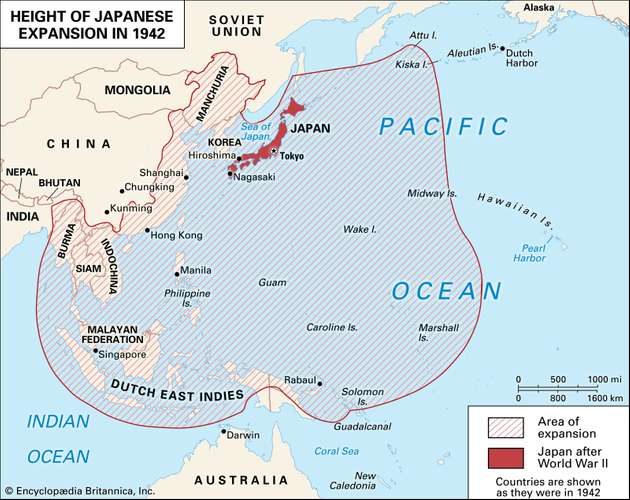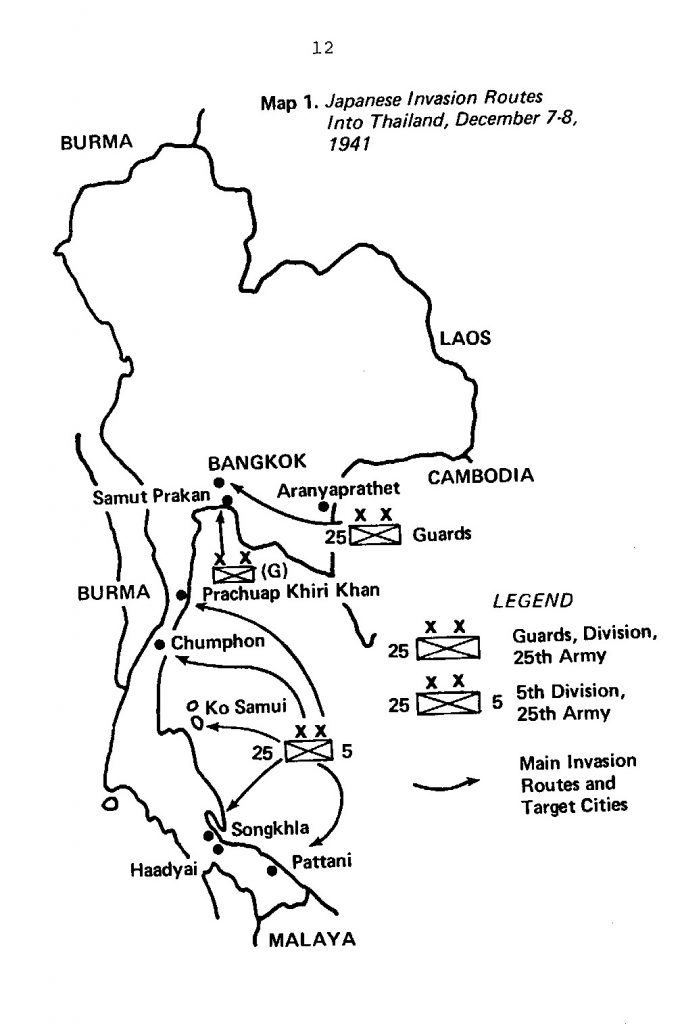In order to better understand what happened in AUG-SEP 1945, one must have an appreciation for the geo-political-military situation that Thailand found itself in in 1942. Nearly simultaneous with Pearl Harbor, the Japanese launched major invasions of the Philippines and Malaya aimed at Singapore. They entered Malaya through southern Thailand. They had also occupied French-Indo China and in cooperation with the Vichy French government, took over the administration. Like they would do in every country they overran, they began to loot those place of resources (oil, rubber, food) and anything else that they felt a need for (industrial equipment, rail lines and bridges, vehicle parts, etc)


In DEC 1941, the Thai Prime Minister Phibun quickly assessed the overall situation and negotiated an agreement with the IJA to avoid a futile fight to defend the country. What followed was much akin to the Vichy French situation. The Japanese assumed administrative control of everything south of Bangkok and west to the Burmese border at Three Pagodas Pass. They also had a fairly large garrison at Chiang Mai in the far north and some troops in the east around Korat and later, up into Ubon where they were building an airfield. Thus, they controlled about half of the countryside. The central plains and much of the eastern portion of the country remained under Thai control. They was simply no reason for the Japanese to waste troops to occupy and administer those areas of no strategic importance. They took the south because of the vital rail line from Bangkok to Singapore.
This situation came into prominence in mid-late 1944. The war was going badly for both Germany and Japan. The major Allied HQ became concerned about the future welfare of the POWs. They began to parachute in teams of US OSS and British SOE agents, usually in pairs. [see the expanded essay on these groups in Section 10.6] Stories are told that in mid-AUG 1945, after the surrender message by the Emperor, British and America agents appeared seemingly out of nowhere to take control of the situation. The Japanese couldn’t understand how so many could have been there for so long and stayed hidden. One of the major tasks of these teams had been to monitor the various POW camps for signs that the Japanese were preparing to execute those men. In addition to the agents, Thais who had been in the US or UK as students or businessmen were also trained as trainers and were sent in to help the agents form guerilla or resistance units known as the Seri Thai. This is where the Thai control of the central plains was critical. It allowed a generally safe, ‘off limits’ area (for the IJA) for these agents to operate with impunity. [see the Seri Thai essay in Section 10.7]
Ray Withnall relates the story of the trials and tribulations of the Thai Government and their growing relationship with the Seri Thai resistance in his book: UBON, the Last Camp before Freedom. I will not attempt to reprise his excellent work.
The following sites provide the background of the political climate that Thailand found itself in as World War approached:
https://www.youtube.com/watch?v=gdFJIU3PzCo
https://en.wikipedia.org/wiki/Thailand_in_World_War_II
https://www.youtube.com/watch?v=rNMmKjKBPVs&t=6s
The Japanese invasion of Thailand:
Discusses the role of the various leaders of the Free Thai Movement:
The Japanese Invasion of Samut Prakan:
https://web.archive.org/web/20091027105111/http://geocities.com/thailandwwii/prakan.html
Thailand’s agreement to assist with TBR:
Dutch East Indies 1940:
